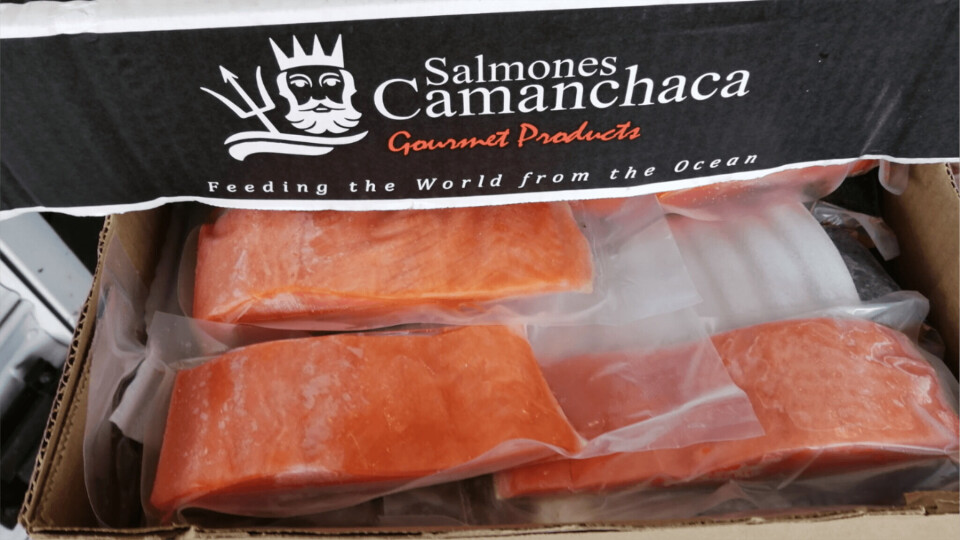
Algae-hit Camanchaca boosted by stronger harvest
Chilean fish farmer Salmones Camanchaca harvested 15,002 tonnes (whole fish equivalent) of Atlantic salmon with an average weight of 4.5 kg in the fourth quarter of last year, along with 1,842 tonnes WFE of coho salmon with an average weight of 4.4 kg, the company said in a trading update today.
The volume is in line with company vice president Ricardo García’s previous notification that Camanchaca anticipated favourable results for the fourth quarter after being impacted by an algal bloom earlier in the year.
Camanchaca’s total harvest for 2021 was 41,937 tonnes WFE, comprised of 40,095 tonnes of Atlantic salmon with an average weight of 4.4 kg, and 1,842 tonnes of coho.
Up to 55,000 tonnes in 2022
The company expects to harvest between 46,000 and 48,000 tonnes of Atlantic salmon this year and 6,000-7,000 tonnes of coho, including around 650 tonnes of coho from the 2021 season that will be harvested this month.
It has targeted a production volume of 70,000 tonnes of salmon a year by 2024.
Last year’s harvest was affected by Camanchaca’s loss of 1.6 million Atlantic salmon, the equivalent of 2,700 tonnes of biomass, because of an algal bloom in the Comau Fjord in Los Lagos region.
The bloom progressively affected four Camanchaca farming sites - Leptepu, Porcelana, Loncochalgua and Marilmó – and killed half of the fish being grown.
Rebuilding biomass
Camanchaca has since raised approximately $23 million to rebuild biomass and make it less susceptible to future algae events.
The salmon farmer will expand operations at farming sites in the oceanic area of the Aysén region, where is less risk of algal blooms.
It will also invest in technology such as bubble curtains to protect sites from blooms and use artificial intelligence (AI) to better anticipate dangers from blooms.
Salmones Camanchaca will also have back-up sites and logistical procedures in place to transport live fish away from danger, using wellboats with a capacity of 3,000m³.
It also plans to increase production of coho because of three advantages it offers: it is harvested before the summer, when blooms occur; it requires fewer antibiotics than Atlantic salmon; and it is immune to sea lice.






















































